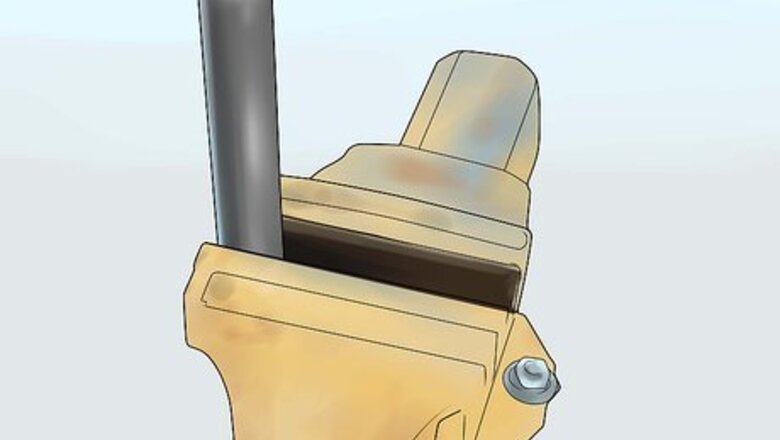
views
Getting the Threads Started
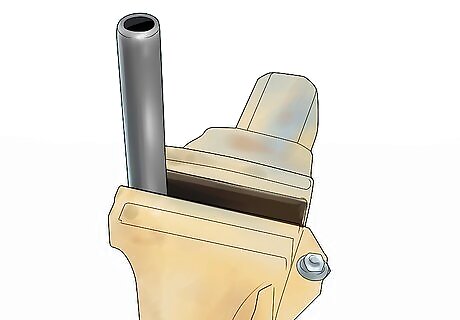
Secure the pipe firmly in a vise. Loosen the jaws of the vise by turning the handle counterclockwise just far enough to fit the pipe between them. Place the pipe in the vise so the end you want to thread is sticking out, then turn the handle back clockwise to tighten it and secure it in place. Note that you can use either a regular table vise or a pipe vise that is specially designed for holding piping in place. This method uses a ratcheting pipe threader to cut threads into the end of a pipe. A ratcheting pipe threader consists of a long ratcheting handle that holds a circular die head at one end, which is a ring with several sets of teeth inside of it that cut the threads. When you ratchet the handle, the die head spins onto the end of the pipe, cutting the threads as it goes on. If you don’t have all the equipment or don’t want to purchase or rent it, you can also have pipes threaded for you at a home improvement center.
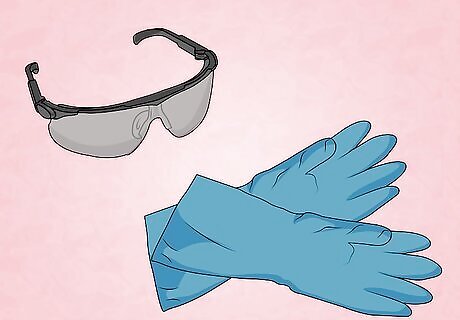
Put on work gloves and safety glasses. These will protect your hands and eyes from any metal slivers and accidental cuts. It will also keep your hands clean as you lubricate the pipe and pipe threader throughout the process. You can just wear 1 work glove if you prefer to leave 1 hand bare to grip the handle of pipe threader better.
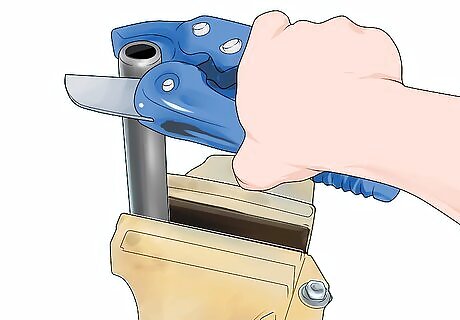
Cut and ream the pipe if you need to make it a different length. Use a pipe cutter or a hacksaw to cut the pipe to length. Insert a reamer in the cut end of the pipe and rotate it around to remove sharp burrs and smooth the end out. A reamer is a cone-shaped manual rotary cutting tool that removes the rough edges of a cut pipe as you rotate it around inside of the cut end.
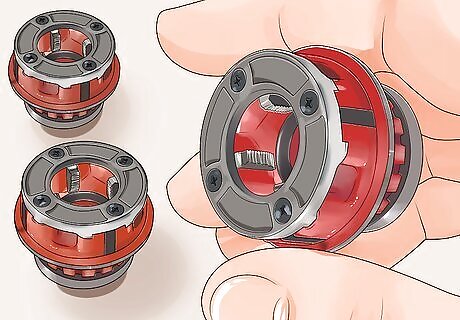
Choose a die head based on the pipe’s diameter. Read the numbers on the different die heads for the ratcheting pipe threader to see what sizes they are. Select a die head that is of the appropriate size for the pipe you want to add threads to. A die head is the part of the pipe threader that actually cuts the threads. Ratcheting pipe threaders typically come with die heads in a few different common diameters. The face of the die head has numbers on it that indicate the size of pipe it is for. For example, if it says 1/2 on it, the die head is for threading 1/2-inch piping. You can purchase or rent a ratcheting pipe threader and die heads at a home improvement center or hardware store. An inexpensive ratcheting pipe threader with 5-6 different die heads costs between $40-$60 USD.
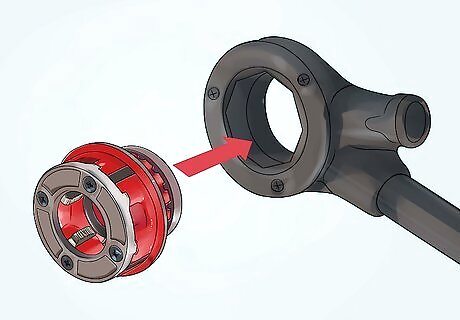
Attach the die head to a ratcheting pipe threader handle. Remove any die head that is already in the handle by pulling it out. Slide your selected die head into ring at the end of the handle until it snaps all the way into place. Tip: Most ratcheting pipe threaders can be used to thread pipes made out of different materials like galvanized metal, copper, or PVC. The ratcheting handle is the handle you use to move it around the end of the pipe to cut the threads in it.
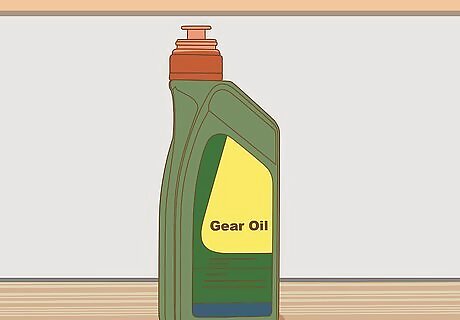
Lubricate the end of the pipe with threading oil. Apply a generous squeeze or two of threading oil to the outside end of the pipe. This will lubricate it so it’s easier to put the die head on as well as lubricate the teeth of the die head, making it easier to cut the threads. Don’t worry about applying too much lubricant. You need a lot to get the job done, so just squirt away until you have completely saturated the outside end of the pipe that you are going to cut threads into.
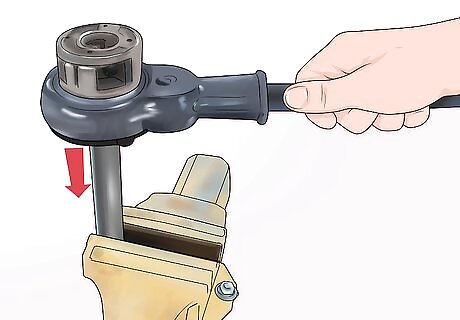
Place the die head onto the end of the pipe. Slide the center hole of the die cutter onto the end of the pipe. Push it into place as far as it will go. If it’s hard to get onto the pipe, you can squirt some more threading oil onto the pipe and the middle of the die head to make it easier.
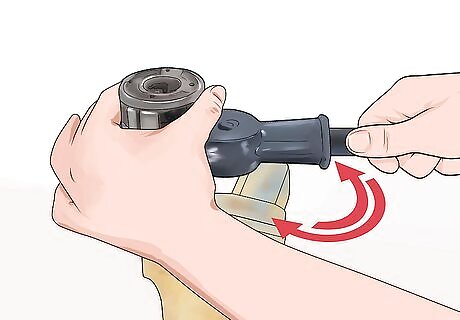
Ratchet the handle while applying pressure to the die head to start cutting. Push against the die head, towards the pipe, with 1 hand. Ratchet the pipe threader’s handle clockwise with your other hand as far as you can go, maintaining pressure on the die head as you do so to make the teeth start cutting into the pipe. If you feel resistance as you do this, then you know the teeth are biting into the pipe and starting to cut the threads. If you don’t feel any resistance, you probably need to push harder on the die head.
Cutting and Finishing the Threads
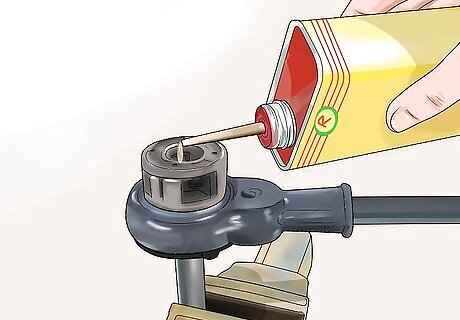
Lubricate the exposed teeth of the die head. Squeeze more threading oil onto all the teeth of the die head that are not yet cutting into the pipe. This is important to make cutting easier and prevent wear and tear on the teeth. Don’t be shy about squirting on the threading oil. You can’t use too much lubricant during this process.

Keep ratcheting the handle until all the die head’s teeth have cut into the pipe. Turn the handle back counterclockwise about 3/4 of the way, then ratchet it clockwise as far as you can go, using your bodyweight to help you turn it. Repeat this until all the die head’s teeth are around the pipe, which means all the threads have been cut. If at any point you feel increased resistance while cutting, stop ratcheting and apply more threading oil to the exposed teeth of the die head.
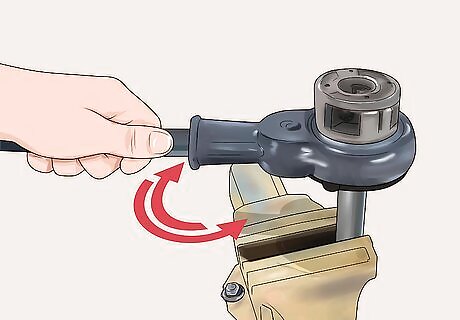
Reverse the direction of the ratchet handle and ratchet it off the threads. Pull up the little black knob next to the die head and turn it to reverse the direction of the ratchet handle. Ratchet it counterclockwise as far as it will go, then turn it back clockwise about 3/4 of the way, and repeat until you have unscrewed the teeth of the die head from the threads. When you have unscrewed the die head all the way, you can simply pull it to slide it off the end of the pipe.
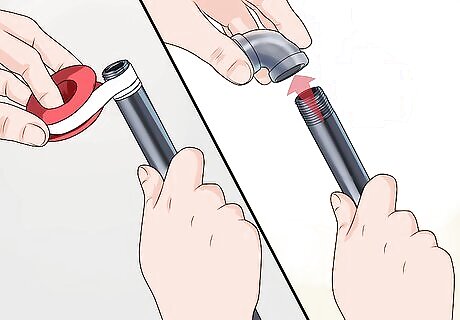
Wrap Teflon tape clockwise around the threads at the end of the pipe. Seal the threads with 2-3 wraps of teflon tape before you attach any connectors or fittings. This will ensure a tight, well-sealed connection. Tip: Check the manufacturer’s instructions on the Teflon tape’s packaging for specific recommendations on the number of wraps. Different diameters of piping may require different numbers of wraps to get a tight seal. You can also use a liquid pipe thread compound instead of Teflon tape to create a strong seal.



















Comments
0 comment